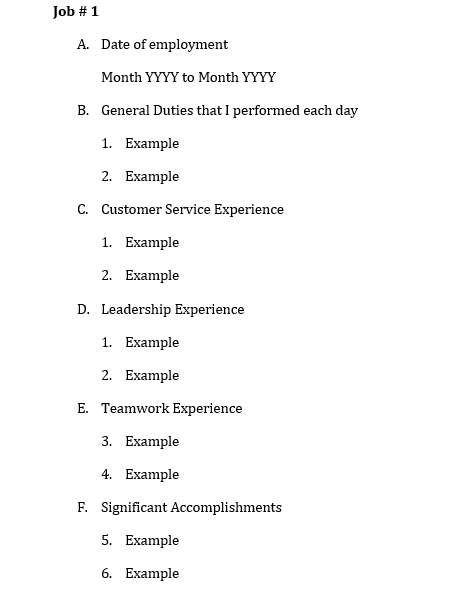Your resume is the most important part of your job application. However, writing a resume can be intimidating. Even if you consider yourself to be a good writer, you may find it difficult to write in a way that is appealing to employers.
At the beginning of my career, I had similar feelings when it was time to write my first resume. For one thing, I do not consider myself to be a good writer and I actually don’t enjoy writing. This may be surprising considering that I frequently write for this website. Nevertheless, it is true. Despite not being a good writer, I have learned to write resumes that not only land me interviews but have also landed me many great jobs.
In this article, I will highlight some tips for creating a resume that will get you hired.
Prepare an outline of your work history
The first step to writing a resume is outlining your experience. You can do this by hand or by using word-processing software such as Microsoft Word or Google Sheets.
Your outline should contain each position you have held, the dates of your employment, and a description of your experience.
During the outline phase, you should not be concerned with the format or the arrangement of the information. The goal of the outline is simply to create a summary of your experience. The process is very similar to what many of us would have done when writing papers in school.
I have created the following sample outline format, that you can use as a starting point.

You may be wondering why my outline separates experience into different sections. The reason I have done this is because different jobs will require you to have different types of skills. If you separate these items during the outline process it will be easier for you to draw upon the information as you craft your resumes.
Documenting your experience at each point in your career is a great way to easily recall the information in the future.
Format your resume
Your resume should always be formatted in a manner that is easy to follow and with a font that is easy to read.
Summary Section
While not a requirement, a summary is a great way to grab the attention of the reader. A resume summary tells the hiring manager the type of job you are looking for and what you bring to the company.
Note: Make sure your summary is relevant to the position you are applying for! It is best to make your summary as general as possible so that it does not become outdated.
If you have a lot of experience in your field, your summary is a great way to summarize your years of experience so that the hiring manager doesn’t have to add up your work history to figure it out.
Skills Section
Every resume should include an area that highlights your main skills. If you have any software knowledge or certifications, these should be placed in a primary area where they can be easily viewed.
I will generally list my skills second on my resume and make them stand out with bullet points for emphasis. See the example below.
Work History Section
The way you arrange your employment history is very important. Most people will put their employment history in chronological order because they believe this is the most logical way to arrange the information.
However, if your work history is very long, important skills and experience may go unnoticed if it is not current.
Therefore, I strongly suggest arranging your resume by relevance.
Most of us may have worked at restaurants or retail in the past, but that may not be relevant to a job in marketing, for example. Unless your past experience is specifically related to the job you are applying for, leave it off or place it further down.
On my resume, I have a “Relevant Work Experience” section followed by a “Work History” section. As a result, the hiring manager is immediately drawn to the experience related to the position I am applying for.
Education Section
- Unless you are fresh out of high school, you should never list this type of education on your resume. It will only age you and emphasize the fact that you have not obtained an advanced degree. Most employers will do background checks and/or assume that you have at least graduated from high school, so it is not necessary that you include this information.
- Always list your advanced degrees, but leave off majors unless they are relevant to the job position.
- You do not need to include your G.P.A on your resume unless you are fresh out of college. This becomes less impressive with time.
Proofread and get feedback
Once you have finished writing your resume, read through it to check it for grammatical errors. Grammarly is a great tool for checking your writing.
After you have done your own proofreading, it’s time to get some feedback from those you trust. If you know someone who is a hiring manager, they would be the best person to look over your resume. Otherwise, any trusted friend or coworker will do. However, find someone who will give you genuine feedback without fear of hurting your feelings. Use the feedback you receive to make final edits to your resume.
Happy job hunting!